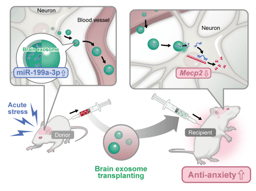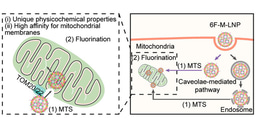Reprogramming Mitochondrial Metabolism to Overcome AML Drug Resistance: TMQ0153 as a Promising Therapeutic Candidate
Published in Cancer, Cell & Molecular Biology, and Pharmacy & Pharmacology

Acute myeloid leukemia (AML) remains a challenging malignancy to treat, particularly due to its aggressive nature, high relapse rates, and persistent drug resistance. One hallmark of resistant AML is its reliance on mitochondrial fitness and altered energy metabolism to support survival and evade therapy 1. In this context, our recent preclinical work introduces TMQ0153 2, a tetrahydrobenzimidazole derivative, as a potent disruptor of mitochondrial homeostasis and a promising adjuvant to existing treatment modalities 3.
We previously examined TMQ0153 for its potential anti-cancer effects on chronic myeloid leukemia (CML) cells 4. Prior findings indicated that TMQ0153 disrupts mitochondrial function and increases oxidative stress by elevating ROS levels and promoting the accumulation of cytoplasmic Ca²⁺. Additionally, we observed decreased intracellular glutathione (GSH) levels during the early stages of TMQ0153-induced autophagy and necroptosis in CML cells. The change in oxidative stress levels caused by TMQ0153 affects mitochondrial homeostasis, leading to various forms of cell death, including immunogenic cell death (ICD), a chemotherapy-induced tumor cell death. These findings suggest that TMQ0153 is a promising agent for targeting mitochondria. Next, we investigated TMQ0153, focusing on mitochondrial metabolism and dynamics in AML.
TMQ0153 exerts its anti-leukemic activity by selectively targeting the mitochondrial fusion protein OPA1, which is often upregulated in AML cells with adverse risk profiles. Inhibiting OPA1 leads to disrupted mitochondrial dynamics, loss of cristae integrity, and mitochondrial membrane depolarization. These structural disruptions are accompanied by a metabolic shift from oxidative phosphorylation (OXPHOS) to glycolysis, elevated ROS levels, and marked apoptotic cell death.
Metabolically, TMQ0153 significantly alters intracellular redox states, as reflected by changes in the NAD⁺/NADH and GSH/GSSG ratios, underscoring its role in inducing oxidative stress-mediated cytotoxicity. In vivo, TMQ0153 reduces tumor burden in xenograft models and demonstrates synergistic potential when combined with clinically relevant agents such as gilteritinib and venetoclax/azacitidine. These combination regimens prolong survival and reduce leukemic load more effectively than monotherapies alone.
TMQ0153 offers a novel mechanism to resensitize AML cells to treatment by targeting mitochondrial vulnerability and reprogramming leukemia cell metabolism. These findings open new avenues for developing metabolism-targeted combination therapies in AML, particularly in resistant or high-risk patient populations. Ongoing studies will further explore its clinical translation and potential in personalized AML therapy.

A mechanistic overview describing the effect of TMQ0153.
Created in BioRender. Park, S and Diederich, M. (2025)
References:
- Cerella C, Dicato M, Diederich M. BH3 Mimetics in AML Therapy: Death and Beyond? Trends Pharmacol Sci 2020;41(11):793-814. doi: 10.1016/j.tips.2020.09.004 [published Online First: 20201005]
- Tran MQ, Nguyen TB, Sawadogo WR, et al. Unaromatized Tetrahydrobenzimidazole Synthesis from p‐Benzoquinone and N‐Arylamidines and their Cytotoxic Potential. European Journal of Organic Chemistry 2018;2018(42):5878-84. doi: 10.1002/ejoc.201801077
- Park SJ, Cerella C, Kang JM, et al. Tetrahydrobenzimidazole TMQ0153 targets OPA1 and restores drug sensitivity in AML via ROS-induced mitochondrial metabolic reprogramming. J Exp Clin Cancer Res 2025;44(1):114. doi: 10.1186/s13046-025-03372-0 [published Online First: 20250407]
- Song S, Lee JY, Ermolenko L, et al. Tetrahydrobenzimidazole TMQ0153 triggers apoptosis, autophagy and necroptosis crosstalk in chronic myeloid leukemia. Cell Death Dis 2020;11(2):109. doi: 10.1038/s41419-020-2304-8 [published Online First: 20200207]
Follow the Topic
-
Journal of Experimental & Clinical Cancer Research

Journal of Experimental & Clinical Cancer Research is an online peer-reviewed journal that publishes original research papers, reviews and commentaries in cancer research, from bench to bedside.
Related Collections
With Collections, you can get published faster and increase your visibility.
Breaking cancer DRUG RESISTANCE: Looking for an interdisciplinary effort solving an unmet clinical need in oncology
All submissions in this collection undergo the journal’s standard peer review process.
Publishing Model: Open Access
Deadline: Apr 30, 2026




Please sign in or register for FREE
If you are a registered user on Research Communities by Springer Nature, please sign in